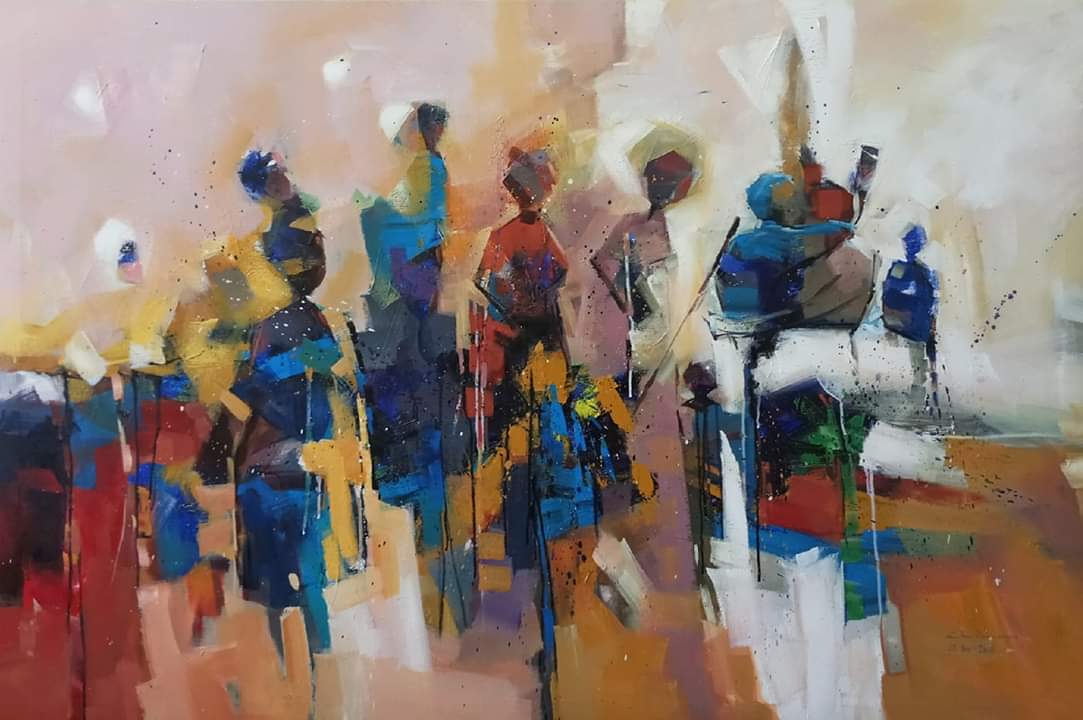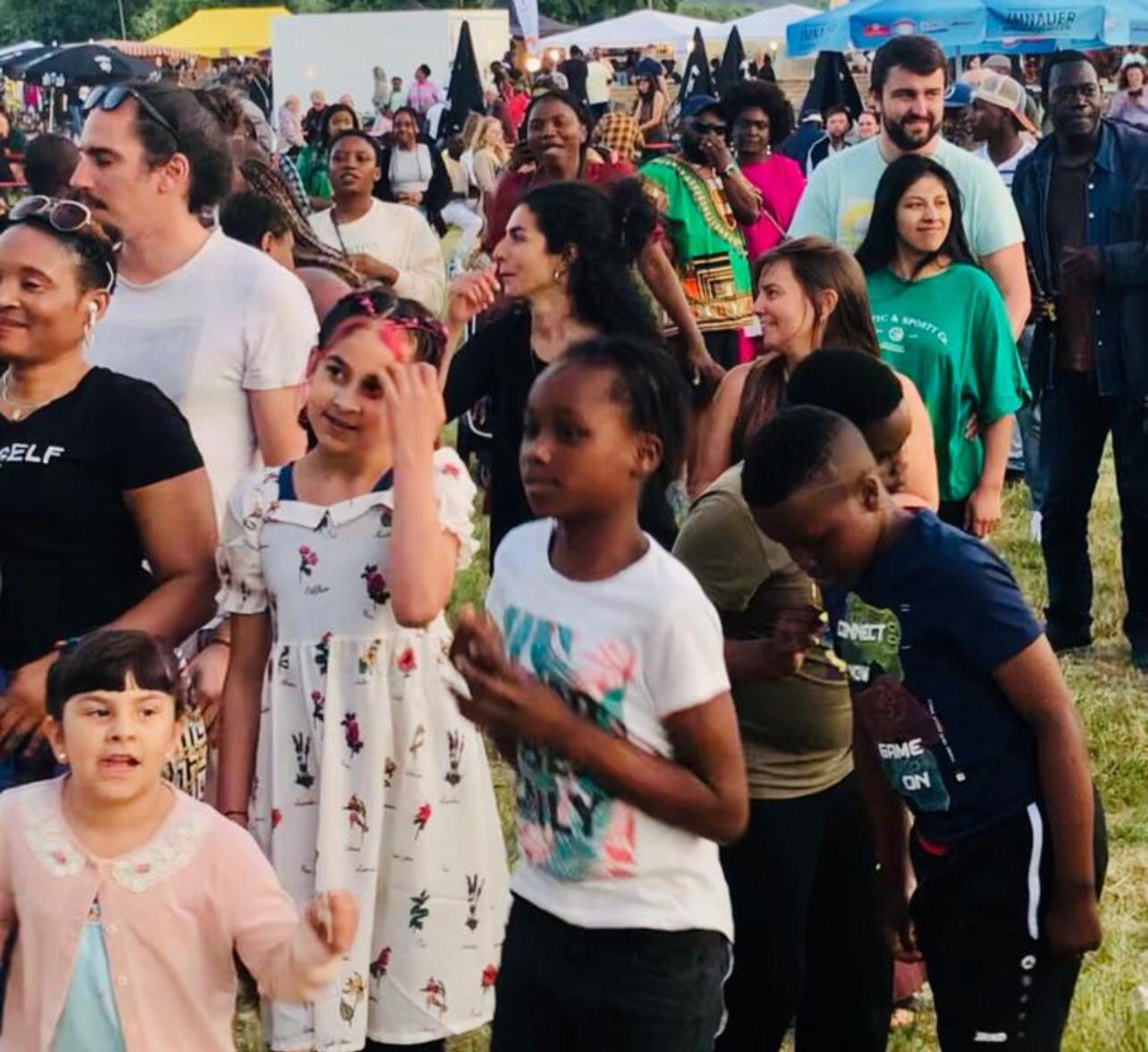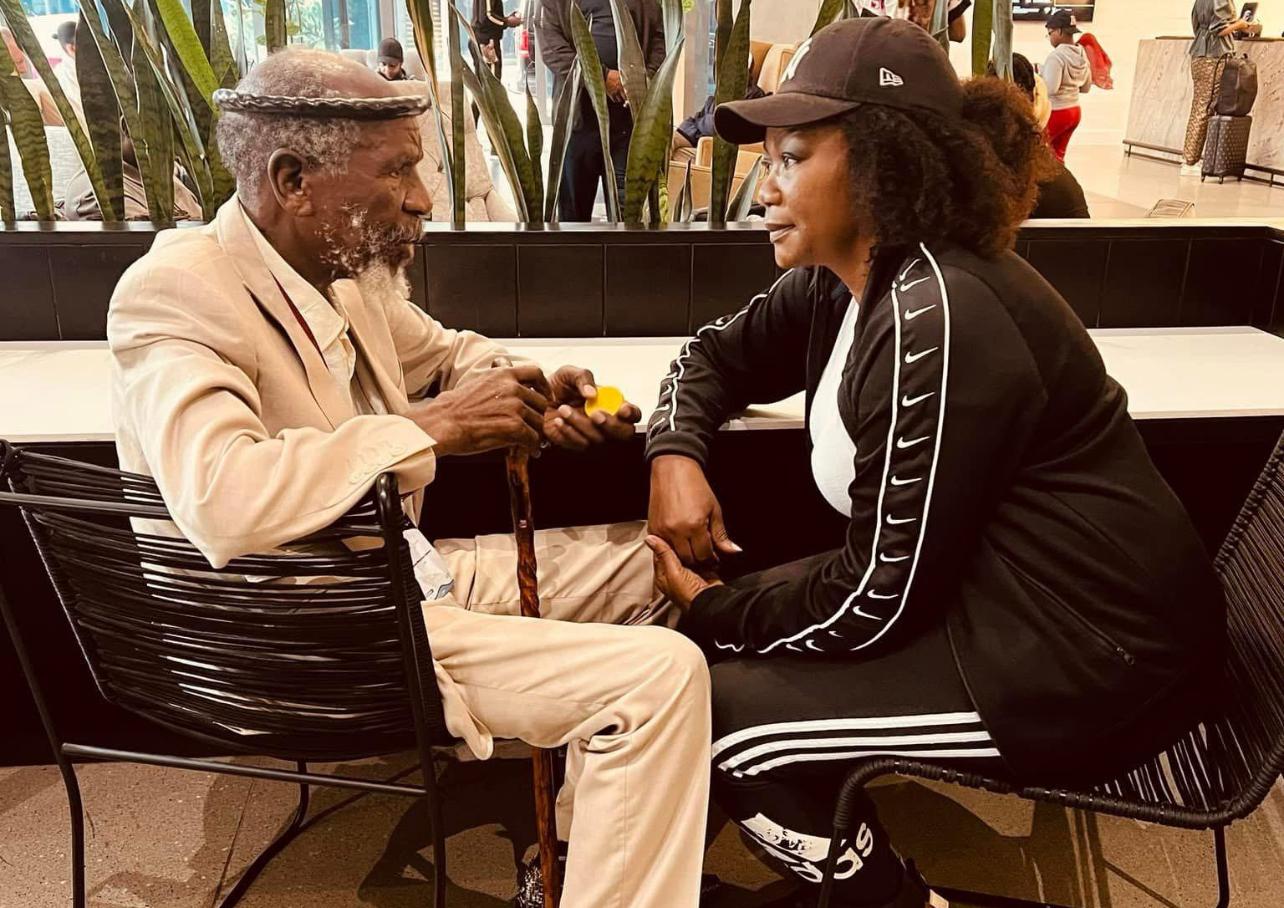As a philosophy, pan-Africanism represents the aggregation of the historical, cultural, spiritual, artistic, scientific, and philosophical legacies of Africans from past times to the present. Pan-Africanism as an ethical system traces its origins from ancient times, and promotes values that are the product of the African civilisations and the struggles against slavery, racism, colonialism, and neocolonialism.
Coinciding with numerous New World slave insurrections (hallmarked by the Haitian Revolution), the end of the 19th century birthed an intercontinental pro-African political movement that sought to unify disparate campaigns in the goal to end oppression. Another important political form of a religious pan-Africanist worldview appeared in the form of Ethiopianism. In London, the Sons of Africa was a political group addressed by Quobna Ottobah Cugoano in the 1791 edition of his book Thoughts and Sentiments on the Evil of Slavery. The group addressed meetings and organised letter-writing campaigns, published campaigning material and visited parliament. They wrote to figures such as Granville Sharp, William Pitt and other members of the white abolition movement, as well as King George III and the Prince of Wales, the future George IV.
Modern pan-Africanism began around the start of the 20th century. The African Association, later renamed the Pan-African Association, was established around 1897 by Henry Sylvester Williams, who organized the First Pan-African Conference in London in 1900.
The Pan-African Congress series of meetings followed 1900’s First Pan-African Conference that was held in London. A meeting of the Congress in 1919 in Paris (1st Pan-African Congress), 1921 in London (2nd Pan-African Congress), 1923 in London (3rd Pan-African Congress), 1927 in New York City (4th Pan-African Congress), and 1945 in Manchester (5th Pan-African Congress) advanced the issue of decolonisation in Africa.
In the 1930s, Dr Nnamdi Azikiwe‘s anti-colonial writings from the United States, Accra, and Lagos established him as the most prominent pan-Africanist in the British West Africa. Then-Colonial Secretary Oliver Stanley called Azikiwe (Zik) “the biggest danger of the lot.” Zik drew his inspiration on the pan-African ideas of West Indians and African-Americans such as Edward Wilmot Blyden, W.E.B. Du Bois, and Marcus Garvey, as well as West Africans such as J.E. Casely Hayford and his allies in the National Congress of British West Africa. In his publication “Renascent Africa”, he offered a vague program for a “New Africa,” modeled on the New Negro Movement articulated by Alain Locke. Outside his writings, Azikiwe actively participated in pan-African politics, promulgating intellectually, in person around the Black Atlantic from West Africa and the Caribbean to the United States and western Europe.
The Fifth Pan-African Congress was a significant gathering, which brought together anti-colonial activists from the African continent and the Diaspora. Women such as Amy Ashwood Garvey and Amy Jacques Garvey helped to organise the Congress meeting and played a crucial role in the conferences.
With the independence of Ghana in March 1957, Kwame Nkrumah was elected as the first Prime Minister and President of the State. Nkrumah emerged as a major advocate for the unity of Independent Africa. The Ghanaian President embodied a political activist approach to pan-Africanism as he championed the “quest for regional integration of the whole of the African continent”. This period represented a “golden age of high pan-African ambitions”; the continent had experienced revolution and decolonization from Western powers and the narrative of rebirth and solidarity had gained momentum within the pan-African movement.
Nkrumah’s pan-African principles intended for a union between the Independent African states upon a recognition of their commonality (i.e. suppression under imperialism). Pan-Africanism under Nkrumah evolved past the assumptions of a racially exclusive movement associated with black Africa, and adopted a political discourse of regional unity.
In April 1958, Nkrumah hosted the first All-African Peoples’ Conference (AAPC) in Accra, Ghana. This Conference invited delegates of political movements and major political leaders. With the exception of South Africa, all independent states of the African continent attended: Egypt, Ethiopia, Ghana, Liberia, Libya, Morocco, Tunisia, and Sudan. This conference signified a monumental event in the pan-African movement, as it revealed a political and social union between those considered Arabic states and the black African regions. Further, the Conference espoused a common African Nationalist identity, among the States, of unity and anti-Imperialism. Frantz Fanon, journalist, freedom fighter and a member of the Algerian FLN party attended the conference as a delegate for Algeria.
Considering the armed struggle of the FLN against French colonial rule, the Conference attendees agreed to support the struggle of those States under colonial oppression. This encouraged the commitment of direct involvement in the “emancipation of the Continent; thus, a fight against colonial pressures on South Africa was declared and the full support of the FLN struggle in Algeria, against French colonial rule”.[28] Tom Mboya, a Kenyan trade unionist and anti-colonial activist, also attended this conference. This visit inspired him to increase the pace of political activity aimed at agitating for Kenya’s independence.
In the years following 1958, Accra Conference also marked the establishment of a new foreign policy of non-alignment between the US and USSR, and the will to establish an “African Identity” in global affairs by advocating unity between the African States on international relations. “This would be based on the Bandung Declaration, the Charter of the UN and on loyalty to UN decisions.”
In 1959, Nkrumah, President Sékou Touré of Guinea and President William Tubman of Liberia met at Sanniquellie and signed the Sanniquellie Declaration outlining the principles for the achievement of the unity of Independent African States whilst maintaining a national identity and autonomous constitutional structure. The Declaration called for a revised understanding of Pan-Africanism and the uniting of the independent states.
In 1960, the second All-African Peoples’ Conference was held in Addis Ababa, Ethiopia. The membership of the All-African Peoples’ Organisation (AAPO) had increased with the inclusion of the “Algerian Provisional Government (as they had not yet won independence), Cameroun, Guinea, Nigeria, Somalia and the United Arab Republic“. The Conference highlighted diverging ideologies within the movement, as Nkrumah’s call for a political and economic union between the Independent African States gained little agreement. The disagreements following 1960 gave rise to two rival factions within the pan-African movement: the Casablanca Bloc and the Brazzaville Bloc.
In 1962, Algeria gained independence from French colonial rule and Ahmed Ben Bella assumed the Presidency. Ben Bella was a strong advocate for Pan-Africanism and African Unity. Following the FLN’s armed struggle for liberation, Ben Bella spoke at the UN and espoused for Independent Africa’s role in providing military and financial support to the African liberation movements opposing apartheid and fighting Portuguese colonialism. In search of a united voice, in 1963 at an African Summit conference in Addis Ababa, Ethiopia, 32 African states met and established the Organisation of African Unity (OAU). The creation of the OAU Charter took place at this Summit and defines a coordinated “effort to raise the standard of living of member States and defend their sovereignty” by supporting freedom fighters and decolonisation. Thus, was the formation of the African Liberation Committee (ALC), during the 1963 Summit. Championing the support of liberation movements, was Algeria’s President Ben Bella, immediately “donated 100 million francs to its finances and was one of the first countries, of the Organisation to boycott Portuguese and South African goods”.
In 1969, Algiers hosted the Pan-African Cultural Festival, on July 21 and it continued for eight days. At this moment in history, Algeria stood as a “beacon of African and Third-World militancy,” and would come to inspire fights against colonialism around the world. The festival attracted thousands from African states and the African Diaspora, including the Black Panthers. It represented the application of the tenets of the Algerian revolution to the rest of Africa and symbolized the reshaping of the definition of pan-African identity under the common experience of colonialism. The Festival further strengthened the standing of Algeria’s President Boumediene in Africa and the Third World.
After the death of Kwame Nkrumah in 1972, Muammar Gaddafi assumed the mantle of leader of the Pan-Africanist movement and became the most outspoken advocate of African Unity, like Nkrumah before him – for the advent of a “United States of Africa”.
It was not until the Seventh Pan-African Congress in 1994, which was held in Uganda, that women’s issues were specifically addressed. For the first time, the Congress was asked to reflect upon the role and needs of women. In order to organise which women’s issues would be raised at the Congress, a pre-Congress Women’s Meeting was held two days before, to provide a framework that ensured women’s voices and concerns were listened to. More than 300 people, 74 percent of whom were women, attended the pre-Congress meeting. This meeting was primarily attended by Ugandan women, who set their own agenda, which was focused on women’s issues such as genital mutilation and the protection of young domestic workers from rape and other abuse. Women participants of the Seventh Pan-African Congress moved towards building an agenda for the Pan African Women’s Liberation Organisation and met daily during the Congress to discuss the logistics of such a movement. The pre-existing Pan African Women’s Organisation primarily consisted of the wives of heads of states, ministers, and other high-ranking women.
In the United States, the term is closely associated with Afrocentrism, an ideology of African-American identity politics that emerged during the civil rights movement of the 1960s to 1970s.
Although Pan-Africanism called for unity between all those of African ancestry, it missed out almost half of these people by overlooking women’s contribution. In the book Pan-Africanism History: Political Figures from Africa and the Diaspora since 1787, it mentioned forty Pan-Africanists, of which only three were women. Due to the lack of representation paid to women in Pan- Africanism, Clenora Hudson-Weems coined the term Africana Womanism in the 1980s, which is an ideology that specifically focuses on black women’s achievements and gains, similar to the ones mentioned below
Source: Wikipedia







